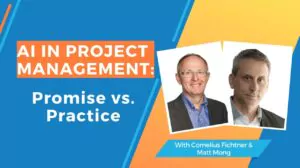Adeaca’s VP of Communications, Matt Mong, chats with Aarni Heiskanen, Construction Innovation Agent and Managing Partner at AE Partners and founder of AEC Business, about the state of the AEC industry today, the challenges they face in regards to adopting new business technologies and the importance to focus on the business side of projects.
MM: Tell me a bit about your background and your experience in helping AEC companies be more productive and profitable.
AH: I’ve always been interested in technology and design and had a hard time choosing between the two. As an architect, I became specialized in design technology and was responsible for the IT on several large projects. In the late 1990s, I moved into internet software development, and later on became a certified management consultant. In that role, I helped real estate and construction industry firms devise business, technology, and innovation strategies. My clients are now among the most successful in the industry.
Over the years, I’ve developed several software applications. The most successful of these has been Thinking Portfolio, a project and IT portfolio management software-as-a-service. Today, it has over 150,000 end users in over 50 countries.
I’m now concentrating on business communication for trailblazing built environment companies at AE Partners, of which I’m a co-founder.
MM: You have an award-winning blog site and podcast about construction innovation and technology. What are some hot topics you cover that have been of particular interest to your audience recently?
AH: AEC-Business.com is my blog and podcast, which I have hosted for eight years now. It covers news and stories about innovation and technology within the construction industry. Recently, the most popular articles have been about construction robotics, 3D printing, and artificial intelligence. I think that indicates ´interest in a more industrialized and digitalized kind of construction.
MM: How would you describe the current state of project-based companies, more specifically construction companies?
AH: The construction industry has always been very project oriented. The problem with construction projects, specifically, is that dozens of companies take part in the project, but they are at different levels of project management maturity and their make-up varies from project to project. That makes the development of the overall process difficult. Hence, every project is basically a prototype. Also, the incentives put forward by the companies can hamper rather than advance collaboration. The technologies that they use for project management and communication are company specific, so digital data does not flow between stages and across processes.
The project participants don’t typically have a real-time view of what has occurred, what’s happening now, and what should happen next. That’s why various tasks need buffers and the overall costs and lead times tend to increase. In short, the traditional way of building is not optimal owing to the fragmented nature of the business and because it’s hard for an individual company to make a big change, unless they are the general contractor.
Integrated project deliveries (IPDs) have tackled many of the aforementioned problems. The participants share goals, risks, and rewards. That encourages them to plan projects collaboratively and use technologies that allow better flow of information between parties. IPDs are mainly used in demanding and large projects, but some of the good practices are trickling down to smaller projects.
I should also mention lean construction, especially takt production, as a project method that has shown very promising results. With takt, teams have been able to cut production time by half, even without any technological aids. That demonstrates how much waste there is when carrying out projects in the traditional fashion, and the importance of detailed planning.
MM: What do you think are the challenges they face with the adoption of technology?
AH: A CEO of an international construction company said a few years back that the reason behind the industry’s slow adoption of new technology was related to risk-taking. He said that companies know about the risks involved in the traditional way of operating and mitigate against these accordingly. However, implementing new technologies in tight schedules and budgets poses an unknown risk. That’s why companies would rather take very small steps or don’t take any at all when it comes to new technology.
Architectural and engineering firms have been more eager to utilize digital technologies. They’ve seen the benefits in speed and quality of the work. However, even they are still delivering documents instead of digital models since many contractors can’t make use of building information models.
Perhaps the biggest issue with digitalization has been that it goes hand in hand with process and even business model changes. If you’re speeding up existing routines in the workflow, but the workflow remains the same, the benefits can be small. It takes leadership and willingness to critically evaluate and rethink the way a company operates to start seeing meaningful growth in productivity and profitability.
MM: Oftentimes, there’s a tendency to chase the new shiny thing, like AI or IoT, before getting the foundation of their business in order. Why do you think that is and what would you say are the building blocks for a successful project business structure to create the foundation for these newer technologies?
AH: I’m a firm believer in the benefits of new technologies and have seen such technology dramatically increase productivity if the prerequisites for its impactful use exist. More often, companies implement new solutions to both reap the benefits and leave their old practices intact. However, that usually doesn’t work because companies often fail to thoroughly analyze the root cause of their problems.
I would recommend that businesses first analyze their business model and their strategic goals. For example, if the company wants to be a cost leader in a focused area, their processes and technologies can differ in this scenario rather than if they choose to be a flexible partner in a variety of project types. In the first example, the company focuses on internal efficiency and systematized, productized services. Process automation and standardization are essential. In the latter example, flexibility and integration across disciplines and partners become paramount.
MM: As projects get bigger and more challenging, how do you see the project-based companies adopting and implementing technology to meet their needs?
AH: A key issue to consider is waste: work that does not create value. In project-based companies, waste manifests itself as having to rework jobs, doing things manually that could be automated, searching for information, not knowing how to use IT tools effectively, and so on. When data does not flow across processes, tasks, and participants, waste increases along with risks related to erroneous or missing information. Companies should identify waste and use technology to eliminate it.
MM: You’ve written quite a bit about AI and construction, and while implementing AI can be very beneficial, it really is only as good as the data you put into it. What do you see as key concerns for construction companies as they look to adopt AI?
AH: I think that especially construction industry companies typically don’t yet have professionals who can develop their AI capabilities. They have to use external consultants who necessarily don’t understand the customers’ businesses. Another concern is the business case for AI. It’s still not clear to many where the biggest rewards from the use of AI come from. The third concern is data: how to make it accessible and useful for AI apps.
MM: If AI is all about having large amounts of data, then project-based construction companies should have no problem implementing it because they have tons of data. However, the current fragmented landscape they are operating in to run their entire business means there’s no data structure in place to feed into an AI. When implementing AI, what problems can arise when there’s a lack of data integration and structure?
AH: It’s true that there is historic data and new data is born every day. Our clients who have started using machine learning have found out that data is not consistent. It is structured for a specific system or for human interpretation. In other words, it is not machine-readable. A lot of human work and tweaking is needed to make old and even new data useful.
MM: What are your thoughts about this new approach to streamlining operations and managing the entire business on one platform?
AH: The debate over integrated or “best of breed” systems is age-old. I don’t think that there’s a universal definitive answer to the question. However, I know that the more separate systems and interfaces you have, the more staff and knowledge you need to manage the complexity. Most businesses want to focus on their business and not have to worry about the technology. The migration to cloud-based, integrated systems is indicative of this trend.
MM: What do you think is the best way to share the Project Business Automation approach with others and educate them on why it’s critical to focus on the business side of projects?
AH: I think that it’s a good exercise to choose a few key pieces of business process information that exist and evolve through a project and walk through the process with others. This would give the decision makers and project professionals an idea of the benefits of adopting an integrated approach.










